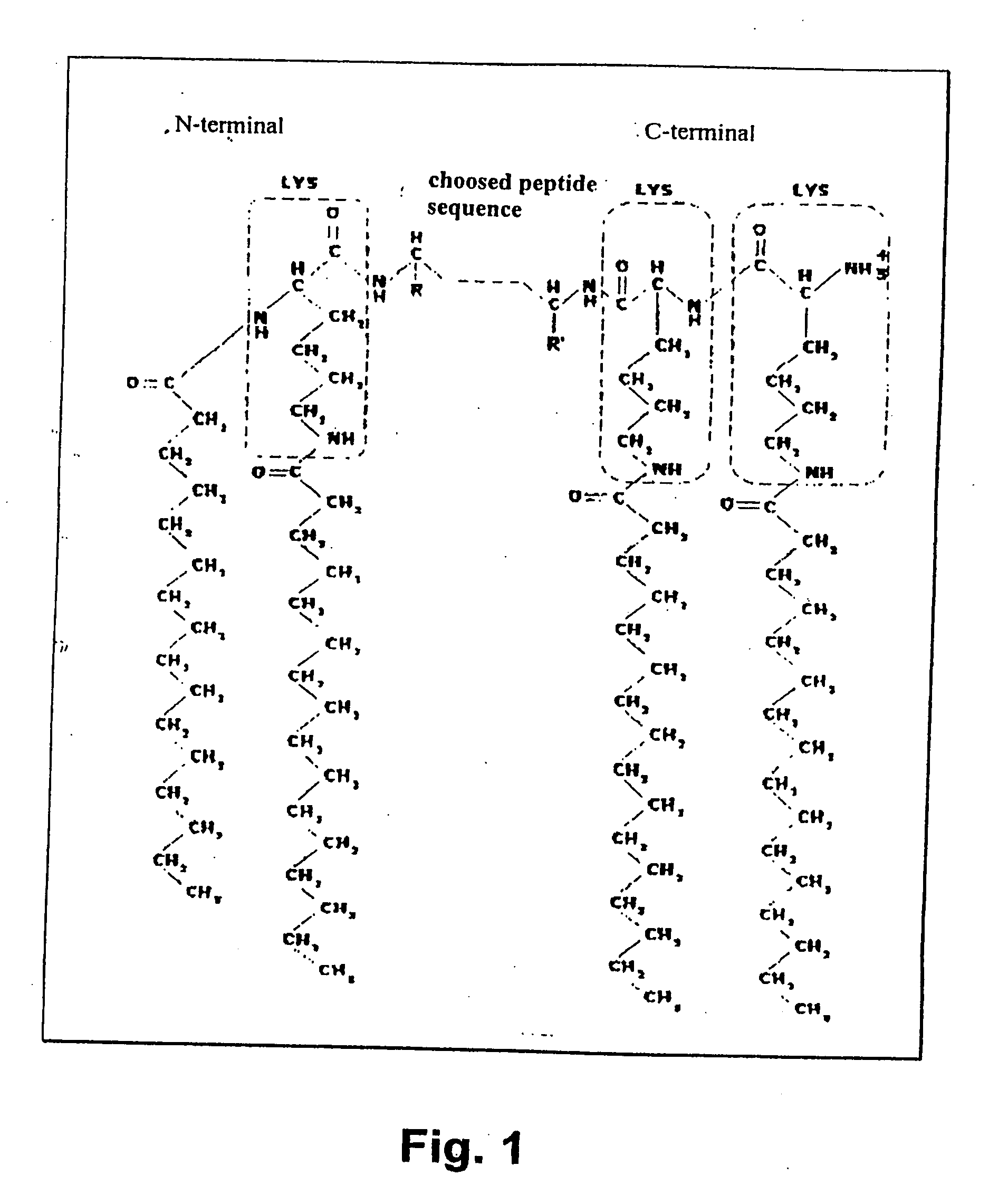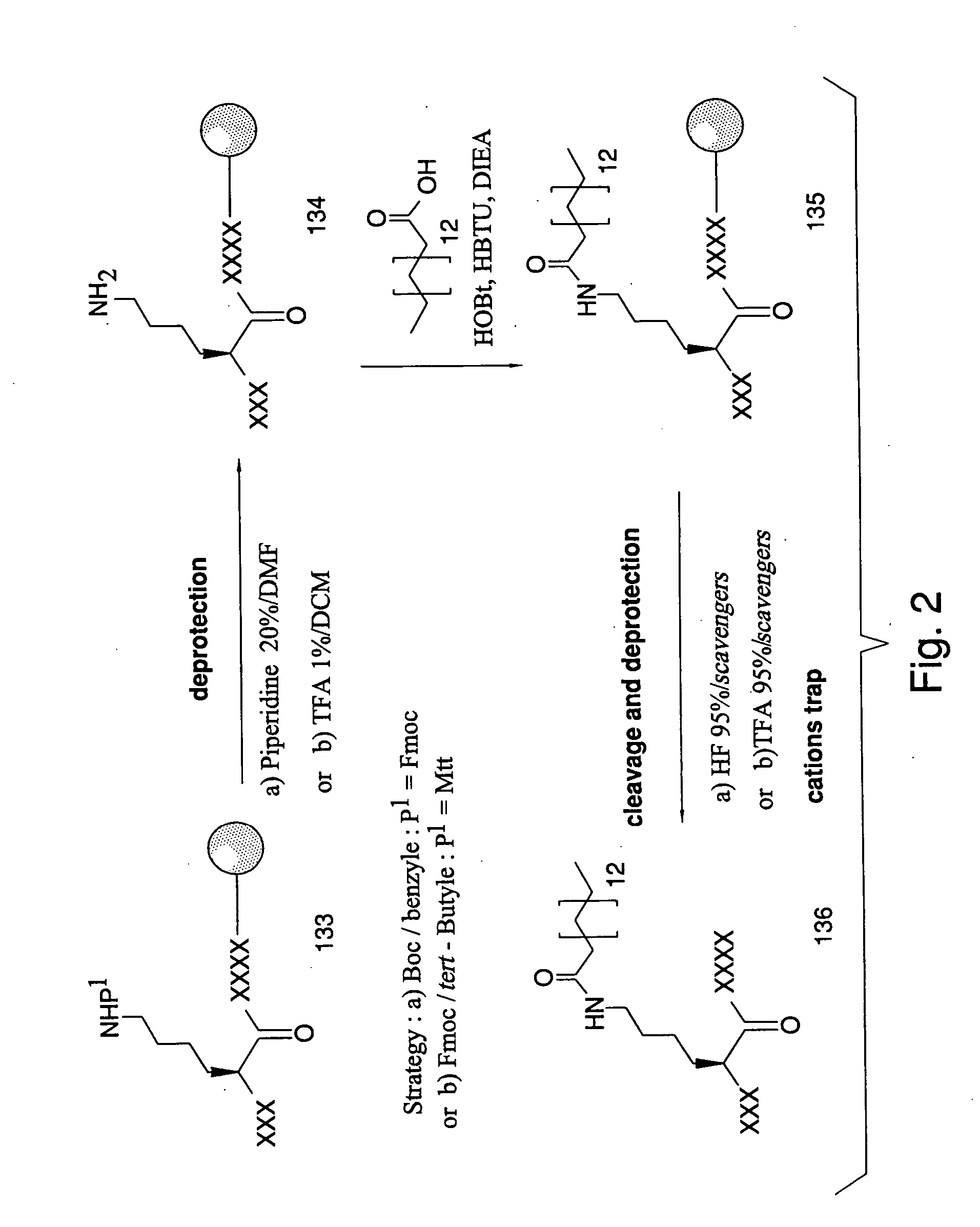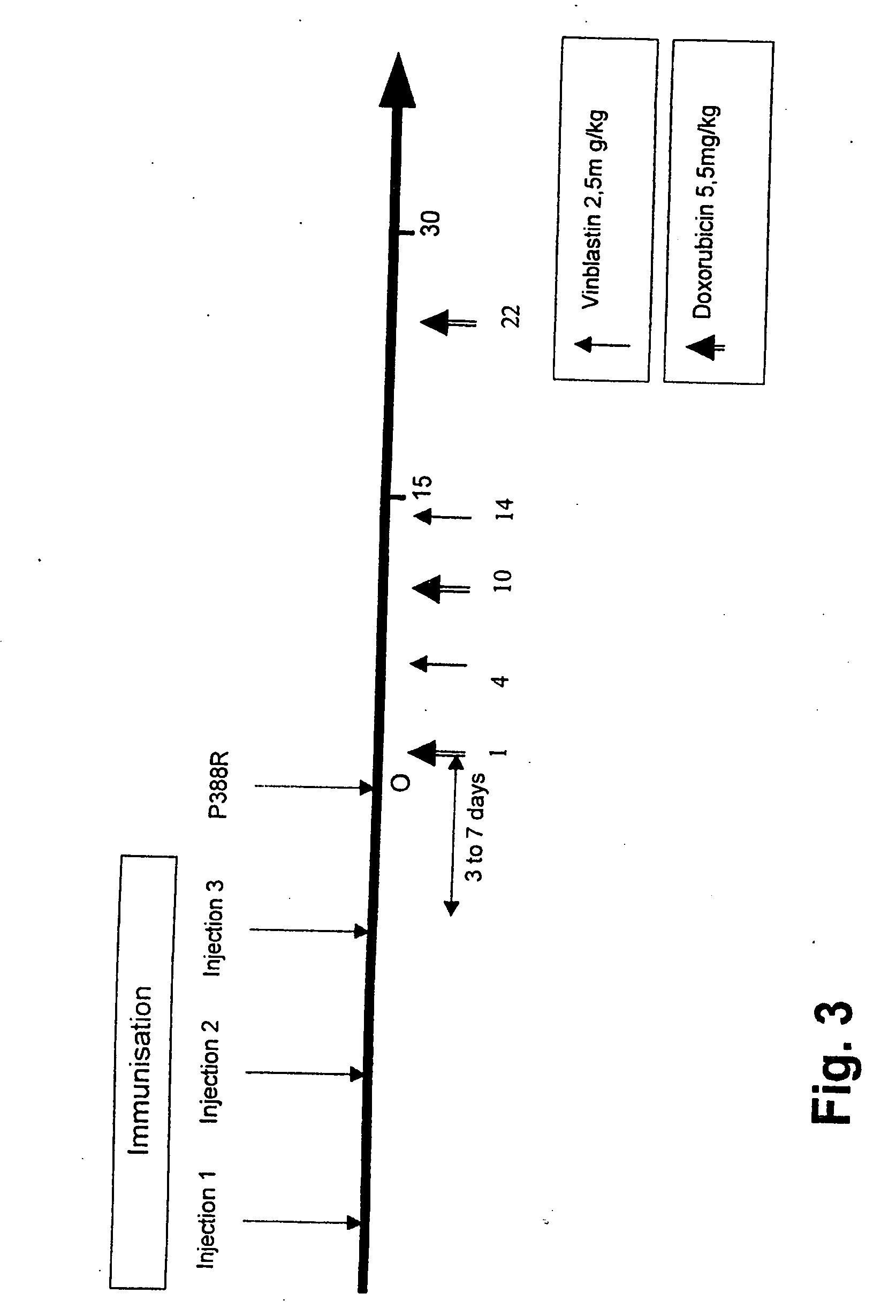Therapeutic vaccine targeted against P-glycoprotein 170 for inhibiting multidrug resistance in the treatment of cancers
- Summary
- Abstract
- Description
- Claims
- Application Information
AI Technical Summary
Benefits of technology
Problems solved by technology
Method used
Image
Examples
examples
[0143] I-1 Preparation of the Conjugates Formed by Covalent Bonding Between the Peptide Region and the Molecules of Fatty Acid Containing a Carbon Chain of Between C12 and C24.
[0144] The synthesis of the peptides was carried out at a peptide synthesizer, for example an Applied Biosystem 430A synthesizer, using (13,14)-tert-butyloxycarbonyl / benzyl and, in situ, activation with (N-[(1H-benzotriazol-1-yl)(dimethylamino)methylene]-N-methylmethanaminium hexafluorophosphate N-oxide (Schölzer M. et al. Science 1992, 256 (5054): 221-225) Advanteously, the peptides were then coupled covalently with four molecules of palmitic acid per molecule of peptide (FIG. 1).
[0145] An improved method of synthesis allowing more effective production of certain amino acids by avoiding their involvement in early terminating reactions has been developed. This is particularly advantageous in the case of mpp1 due to its length (43 amino acids). In particular, the peptides mpp1, mpp2 and mpp4 were synthesized ...
PUM
| Property | Measurement | Unit |
|---|---|---|
| Fraction | aaaaa | aaaaa |
| Fraction | aaaaa | aaaaa |
| Fraction | aaaaa | aaaaa |
Abstract
Description
Claims
Application Information
 Login to view more
Login to view more - R&D Engineer
- R&D Manager
- IP Professional
- Industry Leading Data Capabilities
- Powerful AI technology
- Patent DNA Extraction
Browse by: Latest US Patents, China's latest patents, Technical Efficacy Thesaurus, Application Domain, Technology Topic.
© 2024 PatSnap. All rights reserved.Legal|Privacy policy|Modern Slavery Act Transparency Statement|Sitemap



